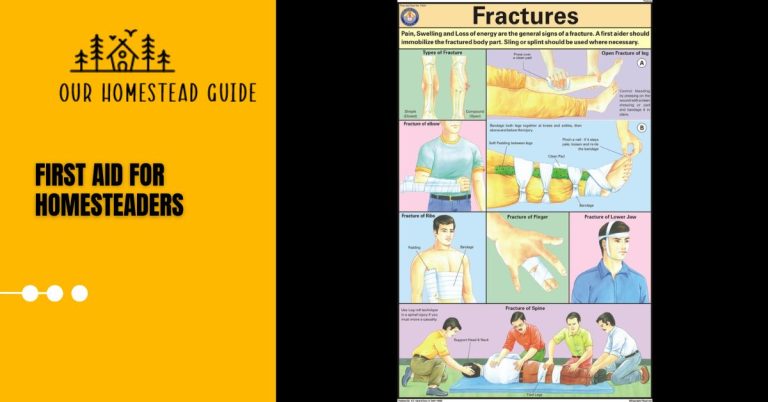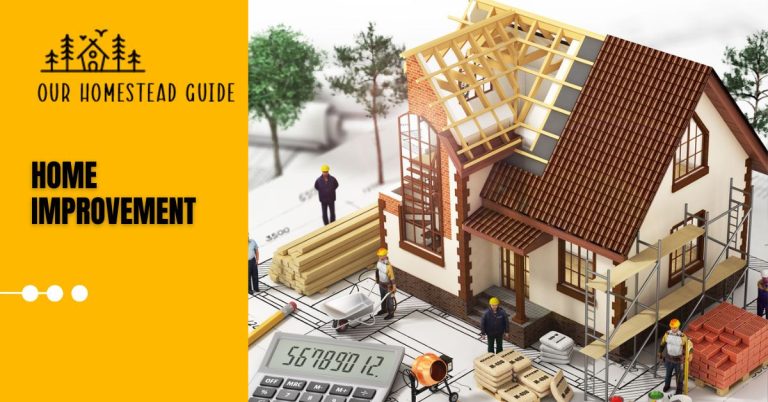How to Make Portable Hog Pens: Building Easy Steps
Portable hog pens, also commonly called “pig tractors”, are mobile enclosures designed for small-scale pig farming. These pens play an important role in offering flexibility in rotational grazing, allowing farmers to manage and protect their pigs while promoting land regeneration.
With their movable design, these structures are ideal for farrowing, pig breeding, and temporary containment of feeder pigs. Portable hog pens offer a practical and adaptable solution for intensive pig farming.
Materials and Tools Needed
| Materials and Tools Needed | Description |
| Corrugated white plastic | Used for covering the top of the hog pen. |
| Weed barrier plastic | Provides additional covering for the sides. |
| EMT (Electrical Metallic Tubing) | Forms the frame of the hog pen. |
| Bootstrap farmer hoop bender | Tool for shaping EMT pipes into arches. |
| Angle brackets | Used to secure EMT pipes and add structural support. |
| Wide track chick lift wheel system | Enables easy mobility of the hog pen. |
| Wiggle wire | Secures plastic coverings tightly in place. |
| Apple cider vinegar | Added to water for pigs to maintain health. |
| Heat lamp (optional) | Provides additional warmth for piglets if needed. |
| Scraps of wire | Used for miscellaneous structural purposes. |
| Tarp or hay for bedding | Provides bedding material for the pigs. |
| Basic hand tools | General tools for assembly and construction. |
| Safety gear | Personal protective equipment for safety. |
How to Portable Hog Pens?
Step 1: Planning and Design
- Determine your requirements for a portable pig shelter. Determine the shelter’s size, location, and function.
Step 2: Building the Frame
- To build the frame, measure and cut the EMT pipes. Shape the EMT pipes into arches using the hoop bender, making sure they are tall enough for the pigs to stand comfortably.
- To build the structure, secure the pipes with angle brackets at the necessary distance.
- For further stability, reinforce the shelter’s doorway with a diagonal bracing.
Step 3: Covering the Shelter
- Attach the corrugated white plastic to the frame’s top. To keep the plastic in place, use the wiggle wire technique.
- Attach the weed barrier material to the sides of the shelter in the same way.
Step 4: Adding Mobility
- Install the wide track chick lift wheel system to the shelter so that it can be moved easily.
- Ascertain that the shelter can be rolled to various locations as needed.
Step 5: Preparing for Piglets
- Make the shelter pleasant for the pregnant pig by using appropriate bedding materials such as hay or a tarp.
- To keep the pig healthy, provide fresh water with apple cider vinegar.
- Install a warming light if necessary for piglets after they are born.
Step 6: Relocating the Pig
- When it’s time for the pregnant pig to give birth, gently assist her inside the shelter.
- Securely close the shelter to prevent any escapes.
Step 7: Monitoring and Caring for the Pig
- During the delivery process, keep a tight check on the pregnant pig.
- Make sure she has food, water, and a pleasant place to stay.
- Once the piglets are born, keep an eye on them and offer any required care.
Step 8: Maintenance and Future Use
- Inspect the shelter on a regular basis for any damage or wear.
- Continue to relocate the shelter for the sake of the land and the pigs.
- As needed, make any repairs or adjustments.
Keeping pigs and land healthy, without moving the pigs
With careful management and an emphasis on sustainable farming techniques, you may maintain the health of both your pigs and the soil without moving the pigs (rotational grazing):
Appropriate Housing and Bedding:
Provide your pigs with sufficient shelter that protects them from adverse weather situations. Make sure they have dry bedding to avoid health problems and to keep them comfortable.
Waste Control:
To reduce manure accumulation, implement an efficient waste management system. Clean and manage manure on a regular basis to lessen the environmental effect on the land.
Enclosures and Fencing:
To prevent overgrazing, properly fence the grazing area. Divide the property into pieces and regulate pig movement inside these portions with electric fencing or other safe fence measures.
Grass Selection:
Allow some regions to recuperate by denying pigs access to them for a set length of time. Rotating the pigs within these zones can assist to organically regenerate the ground.
Feed Administration:
Make changes to the pig’s food to ensure proper nutrition. By preventing overgrazing, proper feeding can assist to reduce the detrimental impact on the land.
Soil Enhancement:
To improve soil quality and assist plant development, implement soil management measures such as adding organic matter, reseeding with appropriate fodder, and applying cover crops.
Management of Pasture:
Monitor the pasture’s condition on a regular basis and take measures as needed. Consider reseeding, weed control, and ground cover management to support healthy forage development.
Grazing Period:
Pig grazing seasons should be coordinated with the land’s natural growth cycles. Grazing should be avoided at important times for the land’s recovery.
Prevent Overcrowding:
Overcrowding in the pig enclosure can result in overgrazing and soil compaction. Stocking density is critical for maintaining land health.
Other Livestock Land Rotation:
Consider rotating other animals, such as sheep or cattle, around the site to supplement pig grazing. Different animals have different grazing habits that might be beneficial to the soil.
Monitoring the Environment:
Assess the land’s condition on a regular basis and fix any issues that arise. This involves inspecting the soil, the condition of the plants, and the occurrence of erosion.
Seek Professional Help:
Consult with local agricultural extension agencies, veterinarians, and sustainable farming professionals to build a land management strategy that is appropriate for your region and conditions.
Pros of Portable Hog Pens
1-Grazing Management Flexibility:
Rotational grazing is made possible by portable hog cages, which allow farmers to transport pigs to new feeding locations. This helps to avoid overgrazing, preserve pasture health, and reduce soil erosion.
2-Regeneration of Land:
These enclosures support natural land regeneration and recovery by restricting pig access to certain locations. This can result in healthier and more productive grasslands over time.
3-Controlling the Environmental Impact:
By confining pigs in specified regions, portable pens assist manage the environmental effect of pig farming. This lowers the possibility of soil damage and excessive manure accumulation.
4-Elements’ Protection:
The shelters protect the pigs from bad weather by keeping them dry and protected. This is especially critical for farrowing sows and their offspring.
5-Predator Defense:
Portable pens provide a safe cage for pigs to protect them from predators, lowering the danger of predation and stress in the animals.
6-Pig Management That Works:
Within these enclosures, farmers can easily observe and control their pigs. It makes feeding, health checks, and piglet care easier.
7-Mobile and temporary:
These buildings are simple to erect and remove, making them adaptable to changing agricultural demands and layouts.
8-Promotes Sustainable Farming:
Portable hog enclosures are a tool for responsible and sustainable pig rearing. They aid in balancing pig demands with environmental care.
9-Versatile Application:
These pens may be used for a variety of functions, including farrowing, holding feeder pigs, and providing shelter for developing piglets, making them a valuable agricultural asset.
10-Better Health and Well-Being:
The enclosed habitat and availability to fresh fodder benefit the pigs’ general health and well-being, resulting in higher development and less stress.
Cons of Portable Hog Pens
While portable hog pens offer various benefits, they also have some limitations and potential drawbacks:
1- Restrictions:
Typically, portable hog pens are smaller than permanent pig housing buildings. As a result, they may not be ideal for bigger pig herds or finishing pigs.
2-Labor-Intensive:
Moving the pens on a regular basis to allow rotational grazing or to give fresh pasture may be time-consuming and labor-intensive, especially on bigger farms.
3-Shelter is scarce:
During severe weather conditions, such as extreme cold or heavy rain, portable pens may not give the same amount of protection as permanent shelters. Additional precautions may be required to guarantee the comfort and health of the pigs.
4-Pig Movement:
Pigs may root and dig, and they may try to escape from portable cages, particularly if they are not well-anchored if the ground is soft.
5-Size Restrictions:
Typically, portable hog pens are smaller than permanent pig housing buildings. As a result, they may not be ideal for bigger pig herds or finishing pigs.
6-Labor-Intensive:
Moving the pens on a regular basis to allow rotational grazing or to give fresh pasture may be time-consuming and labor-intensive, especially on bigger farms.
7-Shelter is scarce:
During severe weather conditions, such as extreme cold or heavy rain, portable pens may not give the same amount of protection as permanent shelters. Additional precautions may be required to guarantee the comfort and health of the pigs.
8-Pig Movement:
Pigs may root and dig, and they may try to escape from portable cages, particularly if they are not well-anchored if the ground is soft.
9-reliance on mobility:
While mobility gives flexibility, it can also be a restriction if the pens cannot be moved readily owing to considerations such as terrain or equipment limits.
10-Environmental Implications:
Despite the benefits of rotational grazing, the repetitive movement of the pens can have an impact on the soil, especially if overgrazing occurs in specific regions.
More Information
used livestock pens for sale
For farmers and ranchers wishing to expand or modernize their facilities, used livestock pens for sale are a cost-effective and sensible answer. These used pens are available in a variety of sizes and layouts, making them perfect for a variety of animals.
You may save money by purchasing old livestock cages while still maintaining the safety and comfort of your animals. It is critical to thoroughly check the pens to verify that they match your specific requirements and are in good shape.
portable goat pens
Portable goat enclosures are a practical and adaptable alternative for goat owners. These portable, lightweight cages offer a safe place for goats to graze, relax, or kid without the need for a permanent structure. They are suitable for rotational grazing and temporary installations, providing flexibility and effective goat herd management.
livestock pens for pigs
Pig-specific livestock enclosures are important for efficient swine management. These strong cages provide a secure and regulated environment for breeding, feeding, and caring for pigs. These structures, which range from farrowing crates to grow-out cages, are built to match the unique demands of pig farmers, assuring efficient and humane pig farming techniques.
Most Frequently Asked Questions!
1-What is a portable hog pen?
A portable hog pen is a transportable or temporary building used to house pigs. It offers pigs with shelter, security, and a regulated environment, while also allowing for quick transportation as necessary.
2-What are the benefits of using portable hog pens?
Portable hog enclosures have various benefits, including:
- Farmers may transfer the pens to new pasture, which improves soil health and minimizes overgrazing.
- Protection: These enclosures give protection from adverse weather conditions like as heat, cold, and rain.
- Farmers may rotate the pens to control pig grazing habits and ensure they have access to fresh feed.
- illness control: Separating pigs into different cages can help reduce illness transmission throughout the herd.
3-How are portable hog pens constructed?
Portable hog pens can be made from a number of materials, such as wood, metal, or PVC pipes. They frequently have a frame with walls and a roof. The building should provide appropriate protection for the pigs while also allowing for simple movement.
4-What size should a portable hog pen be?
The size of a portable hog pen is determined by the quantity and size of pigs that will be housed in it. A single portable pen may be adequate for a small number of pigs, however bigger companies may require many pens to house their herd. Adequate space is required to allow the pigs to roam around and get food and water.
5-Can portable hog pens be used for other animals?
While these cages were created especially for pigs, they may also be used for other small livestock such as goats, lambs, and poultry. To fit the demands of different animals, the design and size may need to be changed.
6-How should I maintain a portable hog pen?
Regular maintenance is required to keep the pens in excellent shape. Cleaning, fixing any damage, and ensuring the pens are secure are all part of this process. Additionally, you should rotate the pens to fresh grazing sites on a regular basis to minimize overgrazing and preserve soil health.
7-Where can I purchase portable hog pens?
Farm supply companies, agricultural equipment providers, and online vendors all sell portable hog pens. If you have the appropriate construction abilities, you might even try creating your own.
8-Are there regulations or guidelines for using portable hog pens?
Farm supply companies, agricultural equipment providers, and online vendors all sell portable hog pens. If you have the appropriate construction abilities, you might even try creating your own.
you may also like this article.



